-
(Waiting) Off My Chest / (Waiting) Off My Chest
As the protagonist waits for a lawyer (she is about to sign a ›living will‹) she thumps through a book called ›Cosa Nostra‹. We hear her words raw and charged, touching upon emotions and thoughts about life, death and the anger and angst she feels towards the idea of having to take someone else's life.Who is she? We don't know much about her,we will gain knowledge of some startling revelations.
Director/author: Maria Niro
USA 2010
Film & Video Video 3min.
Remote Control
-
3 / 3
The movie 3 shows, beyond other things, a desk that walks through rooms and scans objects in order to bring them to life. The whole thing ends in a living wall picture.
Director/author: Roma Duda
Lithuania 2010
Film & Video Video 2min.
Media Campus: Hitch-Hiking to Media Art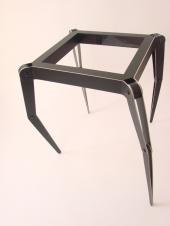
-
99 Beautiful / 99 Beautiful
The video’s title was inspired by the ›99 names of Allah‹ described by his countless attributes as his most beautiful names and translated from the Koran as descriptions of characteristics. Turkish first names often bear a direct reference to everyday language and to the world – for example, they mean dawn, earth and rain but also longing, war and peace.The protagonists set up a personal reference to the respective meaning of their names, offering the viewer an intimate encounter in their individual stories – ›I am Ümit – hope‹ represents a generally and universally valid personification of a feeling and, at the same time, a personal introduction of the person in the video.
Director/author: Tessa Knapp
Germany 2010
Film & Video Video 17min.
Signs of Life
-
Advent / The Advent
Reconstructed documentary taking place before Christmas on the outskirt of Prague. One night and the morning after in the derived lives of six characters search of their place in the world of the 21st century. Drug addiction, alcoholism, pornography and pop-music curing open wounds of own lives.
Director/author: Petr Hatle
Czech Republic 2010
Film & Video Video 18min.
Hard for the Money
-
Affekt /
The drive to kill, the extermination of a species and the lessons learned from that experience.
Director/author: Andrew Meyer
Germany 2010
Film & Video Video 3min.
Media Campus: Over the Edge
-
An Urban Story / An Urban Story
I asked an artist friend who lives in a small city in the north of Italy to give me a guided tour of the city in his car. Invited to show me the places related to his personal experience and memory rather than those representative tourist sites considered to be of historical and cultural importance, he introduces the urban landscape through mixture of information, anecdotes and personal comments. Throughout the video, the narrator remains out of the frame, leaving exclusively the panoramic view from the car window to unfold in front of the camera. His ‘storytelling’ and the city’s ‘scrolling’ landscape weave the apparent anonymity of each to portray not so much a particular location or person as rather a broader problem of historical legacies, urbanisation and transformation processes, and the issues of alienation and displacement seen as emblematic to define the contemporary condition in our society.
Director/author: Iva Kontic
Italy 2010
Film & Video Video 16min.
Hard for the Money
-
Atlantic Garden / Atlantic Garden
A panorama video showing people from different ideologic backgrounds grouped around a mansion. From idyllic scenes reminiscent of 19th century romanticism and the ecological movement, the view pans along a cultivated garden, ending at a cliff. ›Atlantic Garden‹ is part of a serial of thematic landscape panoramas dealing with globalisation and media influence. In them, the world is shown as a place of permanent simultaneous existence.
Director/author: Ulu Braun
Germany 2010
Film & Video Video 7min.
This is Media Art
-
Avó (Muidumbe) / Granny (Muidumbe)
Mozambique, 1960, before the beginning of the war, portrait of a colonial family. A sequence of archive footage filmed by my grandfather, former colonial administrator, is the point of departure for a documentary on the history of the decolonization and its memory. Double memory or memory split in two: the lived and descriptive memory of the colonizers (their texts and images) vs. the invented memory of their descendants. This film is an attempt to represent my indirect memories of Mozambique.
Director/author: Raquel Schefer
Portugal 2009
Film & Video Video 10min.
I Witness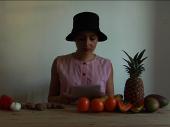
-
bardzo / bardzo
A light-grey human character is living day after day in a completely dark-grey environment. Neither colour nor shadows exist in that world, only the two shades of grey. At a point where the monotony seems to become unbearable, objects and creatures suddenly appear that have colour and even cast shadows. The character is distracted, he dreams at night and subsequently starts to work feverishly.
Director/author: Gerhard Funk
Germany 2010
Film & Video Video 8min.
Media Campus: Hitch-Hiking to Media Art
-
Bettinas Job / Bettinas Job
Bettina is dissatisfied. Surrounded by poverty, disease and death, she tries to wrest something positive from her profession. A Carnival Day at the edge of a small town.
Director/author: Patrick Richter
Germany 2010
Film & Video Video 14min.
Hard for the Money
-
Black Damp / Black Damp
BLACK DAMP draws on the story of the American town of Centralia, once a community of about 1600 people in Pennsylvania's anthracite coal region. A fire has been burning underneath the erstwhile town for forty years and there is enough coal underneath it to fuel the fire for two hundred more. Using archival photos and footage of the site as it appears today, BLACK DAMP explores the strange story of the town, the culpability of government in the face of disaster, and the experience of ownership.
Director/author: Lydia Moyer
USA 2010
Film & Video Video 10min.
Land's End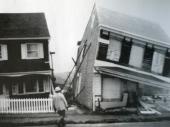
-
Black Salt Water Elegy / Black Salt Water Elegy
Black Saltwater Elegy intimately links the discordant threads of a popular history of dispossession (Africville) with the solitude of its protagonist's graveyard-shift fantasies. After opening with disquieting archival footage of the demolition of Africville, the film shifts to an austere observational portrait. A palatable sense of the duration of midnight work slowly shifts into subtle gestures that hint towards choreographed events. Eventually, a breach occurs as the protagonist fuses with an emergent dreamscape, where ruined landscapes and the resurrection of an extinct community intertwine. Using the protagonist's disembodied point-of-view, the audience floats above a reconstructed Africville, one forever present, nesting in a bed of saltwater fog.
Director/author: Solomon Nagler
Canada 2010
Film & Video Video 16min.
Daysleepers
-
Blunda ICE / Blunda ICE
Dance performance in the open air.
Director/author: Piotr Baran
Germany 2010
Film & Video Video 3min.
Fruit Basket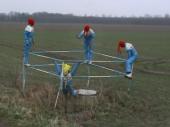
-
Blur / Blur
The motif of this movie is an introduction manual for filming sent to an absolute beginner by the processing laboratory. For me, the cause of failure in filmmaking, explained by the manual, was the very important technical skill of making film images. It’s like coming across unknown delicious tastes when I don’t follow the recipe.
Director/author: Keitaro Oshima
Japan 2009
Film & Video 16 mm 5min.
Nippon Conception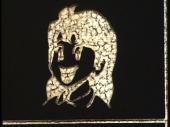
-
Boundary / Boundary
‹Set among an isolated community in a remote landscape near the Russian border, BOUNDARY evokes a space of ambiguity, a psychogeography, an absence of personal histories. It is the first installment in a tetralogy of films based on a statement by Sadeq Hedayat: ›In life it is possible to become angelic, human, or animal. I have become none of these things.‹
Director/author: Devin Horan
Latvia 2009
Film & Video Video 16min.
Remote Control
-
Bridge Kids / Bridge Kids
In the near future there are no adults, a tree house becomes a door to another dimension, and rocks release intuitive powers. Documentary, historiography and mythology collide and transform in a 16mm film showing a world of telepathic children interpreting technologies. A meditation collage of media & sci-fi cliche, Bridge Kids connects a research documentary on J.B. Rhine and the history of ESP / Parapsychology, with a science fiction drama portraying an adolescent's connection with the dead.
Director/author: Geoffrey Pugen
Canada 2010
Film & Video Video 13min.
This is Media Art
-
Brooklyn Poetry Company / Brooklyn Poetry Company
A collage consisting of graphics, film, poetry, music and dance,moving in honky-subway time towards Brooklyn. The resulting fragmentation of the view leads to an altered perception.
Director/author: Jan Walentek
Germany 2010
Film & Video Video 4min.
Pop til u drop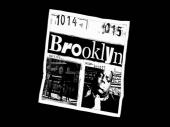
-
Brune Renault /
It seems an ordinary Saturday night. Four French teenagers are involved in their everyday conversations, sitting inside their car, driving around the nightly city, illuminated by streetlights. Maybe they plan to visit someone, to have a drink, or maybe they are on their way to a party. Typical teenage drama unfolds, and the four youngsters passionately engage themselves in the banal and self-centered chitchat typical for adolescents all over the world. After some time, they fall into repetition and get caught in an endless loop of superficialities about youth, romance and personal relationships. The four teenagers are the protagonists in a road movie with the flair and nonchalance of classical French cinema, but are trapped in a story without a fixed beginning or end. They have an air of glamour around them, looking and behaving like professional actors. The viewer is drawn into the action because of the very convincing atmosphere, acting, sound and lighting, But at various moments and scenes, just when the spectators� disbelief is suspended, the camera takes some distance and shows the road movie�s set: a run-down and abandoned garage. The young protagonists appear to be filmed inside a wrecked and run-down car, which sits in the middle of the garage, lifted on a pedestal and cut into four pieces. A shift takes place: the set becomes a sculpture, the film transforms into a document. The teenagers� glamour is brutally unmasked; the already empty storyline dissolves into disbelief again. In �Brune Renault�, Ne�l Beloufa continues his exploration of cinematic language and conventions. In his works, he investigates popular film genres, looks for their limitations and lets them transcend into visual art. Like in �Kempinski�, a science fiction movie filmed in a village in Mali, Beloufa introduces unconventional and disturbing elements into the storyline and travels back and forth between fiction and everyday life.
Director/author: Neïl Beloufa
France 2009
Film & Video Video 17min.
Remote Control
-
CAMP 22 / CAMP 22
›...when mankind’s greatest dream that humans are humans’ friend repeatedly reverts to the great trauma, humans are humans’ greatest enemy. A cell is sufficient – in space and in the imaginative power –to confront individual humans with this conflict on the edge of the trauma: Why do humans subject humans to violence again and again?!‹ A former security chief of a prison for political prisoners is forced to tell the truth. What happened? What did he do to the prisoners? Gas chamber tests and Torture come to light. Does he have any regrets? An experimental attempt to look into a cruel mind, based on an interview.
Director/author: Markus Kreuzwirth
Germany 2010
Film & Video Video 4min.
Media Campus: Over the Edge
-
Campaign like Clockwork - we are hype / Campaign like Clockwork - we are hype
A lovestory over the perhaps most important place in the world - a dirty toilet!
Director/author: Florian Schneider & Rafael Cano
Germany 2009
Film & Video Video 4min.
Pop til u drop
-
Caught in Mise en Scene / Caught in Mise en Scene
Jennifer seeks to explore the boundaries of freedom and limitation by picking away at the threads that inform our lives. Manipulating appropriated materials, she weaves together sequences and narratives to explore the linguistic formations of self. By recoding found footage, she aims to challenge a belief in a core true self; whether or not one exists.
Director/author: Jennifer Ross
United Kingdom 2010
Film & Video Video 3min.
Media Campus: Over the Edge
-
Cees / Cees
A short docu-fiction that arose after I spent several months with my grandfather last year. For two years now, he has felt increasingly isolated from the outer world, confronted by the acute deterioration of his body, loneliness and a longing for intimacy. As for me, I felt the need to spend time with him and look at him from close up, without keeping any kind of distance. I spent a lot of time filming his body as he was resting. Somehow, it was the trembling of the tiny muscles under the almost see-through skin on the sole of his foot that touched me most. I saw in it a relentless, obstinate, immensely powerful liveliness, but at the same time its undeniable passing by. Looking at him in this way, I saw life in him in its most crude and most tender form. Cees grew from the desire to become curious, intimate, up close and personal again.
Director/author: Viola Groenhart
France 2010
Film & Video Video 9min.
Media Campus: Prepilog
-
Cet Air La / Cet Air La
Cet Air la is a famous french song from 1963, sung live by NY singer April March in a cappella with Julien Gasc. The couple is singing while flying over a superimposed 16mm projection of a stop motion animation of a series of clouds, birds, bubbles, smoke machines and glitters - the song has the texture of a dream.
Director/author: Marie Losier
USA 2010
Film & Video Video 3min.
Pop til u drop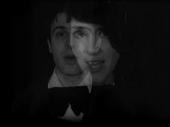
-
Chroniques de la poisse / Sticky Ends
Jinx is a man with the head of a fish. Misfortune bubbles escape from his mouth. When one of them follows somebody, he becomes dogged by bad luck, and comes to a sticky end.
Director/author: Osman Cerfon
France 2010
Film & Video Video 6min.
Fruit Basket
-
Ciudad de las Flores Muertas /
Inspired by the poems from the book “After the Light, the Stone” by Mexican author Karla Sandomingo. The images interpret a human relationship in the context of a young couple who reflects upon their mutual passion, leading them to experience routine, hate, frustration and violence.
Director/author: Sharon Toribio
Mexico 2010
Film & Video Video 3min.
Media Campus: Prepilog
-
Comca'ac / Comca'ac
The Comca'ac (the people who speak) are a small native community from the state of Sonora, Mexico. With a great cosmogony based on the stars and the songs, the Comca'ac live and sing their way through their poor reality. This is a small portrait of how these people talk and sing to prevail in this earth.
Director/author: Pedro Jimenez
Mexico 2010
Film & Video Video 7min.
Land's End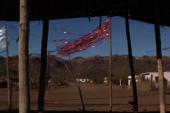
-
Commentary / Commentary
›Hi, I’m Robert Cambrinus, the director of this film!‹ This friendly greeting can be heard on the soundtrack, then it is immediately swept up by the film’s own images: The wooden lion will play an important role later. Cambrinus pays no attention to the film’s title, Commentary, as he takes a look at the next scene as in the audio commentary on a DVD: He intended to allude to Arabian deserts, shooting took hours, but the camera was, unfortunately, ›a little shaky.‹ In addition, formations that resemble dunes turn out to be wrinkles in a vaguely sand-colored blanket. (…) Commentary is a clever game of deception and commentary on a contemporary viewing regime which has, for the most part, rarely been dealt with in cinematography: As if in an effective final point, Cambrinus promises a version of the film without audio commentary as a DVD extra. The remaining credits are accompanied by the characteristic embarrassed sighing that’s audible on DVD soundtracks when the person doing the commentary has nothing more to say. (Christoph Huber)
Director/author: Robert Cambrinus
Austria 2009
Film & Video Video 15min.
Green Screen
-
CRASH SITE / My_Never_Ending_Burial_Plot / CRASH SITE / My_Never_Ending_Burial_Plot
A / D 2010. In the first of the three acts of CRASH SITE, suddenly - and inconveniently - the mobile phone rings: Jean-Luc is on the line and asks for Anne-Marie. The caller is told, irritated, in slightly broken French, ›She's not here,‹ and ›Leave me alone.‹ It is easy to see that hiding behind the two first names are Miéville and her husband, Godard. CRASH SITE deals, not least, with the sixth part of a series in which Constanze Ruhm confronts iconic women characters from modern cinema. However, punctuating this short, very humorous sequence is the construction of the film’s fabric, which is based on cultural knowledge, omissions, shifts, and ultimately, transgressions. A variety of relationship conflicts deliver a loose narrative structure, whereby discourses on death, identity, economy, and love are continually discernible. There is no causal story in the conventional sense; as one of the film characters, falling out of her role, as it were, records a formal gesture that, so to speak, shapes the entire film: ›They were digging for the story, but only hit upon the ideas of others.‹ Meeting concretely are the following apparitions or revenants of film history: Hari (Solaris, Andrej Tarkovsky), Giuliana alias Julian (Il Deserto Rosso, Michelangelo Antonioni), and Nana (Vivre sa Vie, Jean-Luc Godard). Along with quotations of their roles, also stylistic and auditory elements of the reference material find their way into the film. But with Ruhm, the characters, or rather, their descriptions do not appear as pure reference elements, but instead, they are in the best sense of the word debased, and continued with the help of stylistic means from, for example, musicals, slapstick, Mangas, and computer language. The reference instead mutates to a gesture of reverence, an affective dedication that is enhanced with contemporary aspects, including biographical ones. Driven by cinematic figures, Ruhm creates a fascinating, attractive, theatrical film space in word, sound, and image, which at the same time serves as a performance stage for three outstanding actors. (Dietmar Schwärzler, translation: Lisa Rosenblatt)
Director/author: Constanze Ruhm
Austria 2010
Film & Video Video 69min.
Crash Site - My_Never_Ending_Burial_Plot
-
Crystal Girls / Crystal Girls
The existence called ›a girl‹ who reserved the gender, was strange, warped but beautiful. There were girls who seemed delicate and fragile like a crystal, but who became interested in self-harm. In this film, I describe the contrast between girls who embody strangeness and loveliness.
Director/author: Saika Tokunaga
Japan 2010
Film & Video 16 mm 10min.
Nippon Conception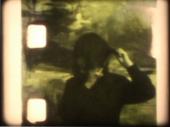
-
Dai Yi Ming Zhi De Shi Wu (The Unnamed) / The Unmamed
This film is constructed upon the visual poetry between what you hear and see, and a sensual fluidity that is not based on the cause and effect relationship. It casts away the practicalities and the functionalities commonly defined in real-world objects by returning things to their raw state, and guiding the viewer’s awareness to the finer details, while intertwining layers of poetic imagery.
Director/author: Ya-Li Huang
Taiwan 2010
Film & Video 35 mm 10min.
Grey Gardens
-
Das Gespenst des Glücks / The Ghost of Happiness
A man and a woman in a big embrace. The TV shows a couple dancing in a Hollywood musical. The man and woman attempt to follow suit, but their movements are wooden and their feet leaden, as if under extra gravitational pull. Their perseverance completely robs their dance of the lightness of the original. All that remains is the melancholy cast of failure.
Director/author: Max Philipp Schmid
Switzerland 2011
Film & Video Video 9min.
Remote Control
-
David /
We never get to see the David from the title. However, his lover, played by Nina Yuen, is constantly on screen. She hopes to win him back by casting spells on him; she carefully carries out a series of superstitious enchantments. On a pair of tights, she draws underwear with blue glitter, which she will be wearing on the day he returns. She decorates apples and other fruit with sprinkles and candy, according to a strict protocol. Aspirins, crushed to a powder, are ritually strewn over her lover’s photo, only to be blown away again. In 'David', love, beauty and superstition form a perplexing trio. (Netherlands Media Art Institute, Nanda Janssen)
Director/author: Nina Yuen
USA 2010
Film & Video Video 4min.
Fruit Basket
-
Dead air / Dead air
Trying to find a creative space during my year-long residency at the Florence Trust.
Director/author: Nisha Duggal
United Kingdom 2010
Film & Video Video 2min.
Pop til u drop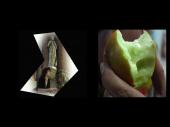
-
Desert 79°: Three Journeys Beyond the Known World / Desert 79°: Three Journeys Beyond the Known World
Desert 79° looks over the edge of the known world. Three historical accounts of Arctic travellers in search of the unknown filmed in different tints of white. (1) The Greek Pytheas was the first to describe the Arctic Ocean (330 BC). (2) Admiral John Ross met the only inhabitants of the universe on an unknown Arctic coast (1819). (3) After his hot air balloon crashed on its way to the North Pole, the Swedish inventor Andree embarked on a long journey by foot over the ice cap (1897).
Director/author: Anna Abrahams
Netherlands 2010
Film & Video 35 mm 19min.
Land's End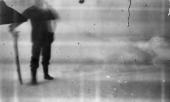
-
Die Verfilmung meines Lebens / The story of my life
The film shows Burger’s planned filmic biography of his life; in this, he collaborates with Alfred Hitchcock, who writes Kim Novak into the script without consulting Burger. Insinuated intimacy is rejected, he breaks with Hitchcock in anger. The meeting with Buster Keaton doesn’t go to plan either; first Keaton throws Burger’s script into the lake at Schliersee, then he destroys his film set. A trip to Paris to meet Franz Liszt turns things around...
Director/author: Felix Burger
Germany 2010
Film & Video Video 22min.
Media Campus: 100 Jahre Hollywood und seine Folge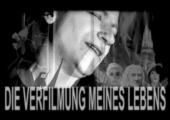
-
Druhý život (Secondlife) / Secondlife
The whole world will one day be downloaded into a single communications network. People no longer have to travel to orient themselves in the world to meet other people.We will be able to sit on this planet where they only want a whole human experience they can trigger on the computer. The question is whether history is approaching its end, or vice versa, whether we are standing on the threshold of a completely new era.We are no longer residents of one city or one country.
Director/author: Peter Kovácik
Slovakia 2010
Film & Video Video 18min.
Signs of Life
-
Eating at the void / Eating at the void
›Eating at the void‹ is a melancholic jump and run fairy tale, a surreal picture dream and nightmare at the same time in black and white. Chichirik’s individual approach towards animation is somewhere between classic stop motion, compute game worlds and traditional fairy tale creates a patchwork made of figures, characters and forms, a story that is told like the horizontal axis of a console game.
Director/author: Julia Burgardt
Germany 2010
Film & Video Video 3min.
Pop til u drop
-
End Transmission / End Transmission
A decoded, alien environmental message, structured as a hypnotic experimental film, forcefully and poetically warns us of their return and the planet's re-colonization.
Director/author: Yin-Ju Chen & James T. Hong
Netherlands 2010
Film & Video Video 15min.
Land's End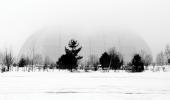
-
essLöffel / essLoeffel
A woman eats spoons to become pregnant.
Director/author: Kate Haase & Sebastian Hähnel
Germany 2010
Film & Video Video 15min.
Media Campus: Prepilog
-
Exist / Exist
The work gives priority to Cloth Motion. and is an attempt to unify these simulation results and directions in the setting of microgravity world. My production work theme is ›existence‹. It is a piece, and at the same time an ensemble, merging all parts of existence of the world.
Director/author: Tetsuka Niiyama
Japan 2010
Film & Video Video 1min.
Nippon Conception
-
Fifteen An Hour / Fifteen An Hour
Fifteen An Hour is the amount of pay the nighttime workers received for cleaning the beaches of Pensacola, Florida.
Director/author: Kevin Jerome Everson
USA 2010
Film & Video Video 6min.
Land's End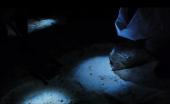
-
Filmscribble / Future I / Visions / Filmscribble / Future I / Visions
Trance performance film sketches / motion sequences become individual segments, each of which, on its own, appears to be alienated, existing as an outlined study without a linear story line. The double images of the parallels created in the projection lead to a superimposition in the temporal/spatial vacuum.
Director/author: Anja Czioska
Germany 2010
Film & Video 16 mm 3min.
This is Media Art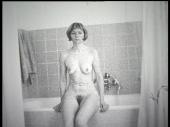
-
Fires / Fires
On powerlessness when feelings disappear.
Director/author: Philipp Eichholtz
Germany 2010
Film & Video Video 4min.
Pop til u drop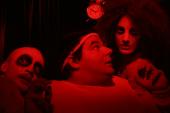
-
flussaufwärts-das rote kleid / upstream-the red dress
Two worlds – two places – and still there is something connecting these two worlds. The alliance is inexplicable – surreal. The video is about saying farewell considered from two different points of view. The video was produced shortly after “The Red Shoes” was made. In a way it, seems to be a sequel to the “Shoes”.
Director/author: Mira Amadea Breuer
Germany 2010
Film & Video Video 6min.
Media Campus: Hitch-Hiking to Media Art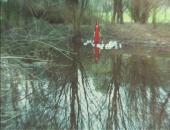
-
Flyscreen / Flyscreen
Flyscreen is a camera-less ›rayogram‹ film, made by layering flyscreen material onto raw 16mm film stock and then exposing to light.The sound heard is the optical sound of the images passing the 16mm optical sound head.
Director/author: Richard Tuohy
Australia 2010
Film & Video 16 mm 8min.
This is Media Art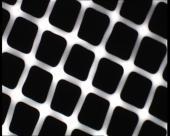
-
Four Seasons /
An absurdist, phony, low-fi mixture of a variety of film genres: film noir, thriller, soap opera, documentary and melodrama. The video opens with dramatic music; fake blood drips on bathroom tiles, snowflakes whirl through an apartment and a woman climbs a staircase. She introduces herself as Lucy and says she is complaining about the music - and then finds a naked, bleeding man rising out of a bath tub. The narrative becomes more and more complex and incoherent when the man starts calling the woman Stella - a reference to Tennessee Williams' ›A Streetcar Named Desire‹. From that point, various story-lines are interwoven and more and more visual clichés and low-fi special effects are introduced. Camera work and dialogue are deliberately kept amateurish; a multitude of filmic and literary references are touched upon: surrealist storytelling, avant-garde dramaturgy,movies by Polanski and Stephen King. A rather neutral voice-over recites a text about labyrinthine architecture, influenced by Borges' short story ›The Immortal‹.
Director/author: Keren Cytter
Germany 2009
Film & Video Video 12min.
Flesh for Fantasy
-
Fragments of Life / Fragments of Life
An experimental short film about mysteries of life. The film contains four parts. They are about birth, love, passion and death. As an art form, Fragments of Life is somewhere on the borderline between painting and cinema.
Director/author: Anastasia Lobkovski
Finland 2009
Film & Video Video 13min.
Media Campus: Prepilog
-
Free Radicals / Free Radicals
›I filmed every day. I filmed with friends…in school…There were no rules. We were totally free,‹ recounts filmmaker and curator Pip Chodorov in his new documentary. Named after the Len Lye’s landmark experimental film of dancing lines and marks scratched into the emulsion. Free Radicals, is a documentary film which explores the history of 20th-century experimental filmmaking. Filmmaker and film activist Pip Chodorov offers this affectionate overview of some of the leading figures of 20th century experimental film. The artists and poets of cinema since before WWI have always been free radicals, crazy about filmmaking and pushing the art-form in radical new directions. Pip shares with us the films he loves and introduces us to some of the free radical artists in a personal and plainspoken manner (›I’d like you to meet some of my friends and see their films‹). Chodorov combines clips and even films in their entirety with conversations with such luminaries as Hans Richter, Robert Breer, Michael Snow, Peter Kubelka and Stan Brakhage in his final recorded interview and the godfather of the New American Cinema, Jonas Mekas. Pip does not hesitate to show extended clips of the actual films by the artists, immersing the viewer in their unique visual worlds and perspectives. Drawing from the Dada and Surrealist movements, many of these artists formulated new film grammars to express themselves. Others used the photo-realistic power of the camera to transform objects and people into personal symbols and ideas. Avant-garde cinema has always occupied an uncomfortable position in our culture. Traditionally, galleries have shunned it since its reproducibility makes it difficult to commodify (though Pip to his credit has started a new organization ›The Film Gallery‹ that may cause the art world to rethink its position). Further, unlike popcorn cinema with its institutional modes of representation, experimental film frustrates uninitiated audiences with its challenging forms. In response to these desolate conditions, Jonas Mekas and others created their own grassroots network for making and showing their films in the 1960s. Many of these organizations such as the Filmmakers’ Co-op and Anthology Film Archives are still active today. Chodorov’s film is an affectionate tribute to these influential yet struggling artists who created this often misunderstood area of filmmaking.
Director/author: Pip Chodorov
France 2010
Film & Video 35 mm 80min.
Free Radicals
-
Fresh Cherries (Swieze Wisnie) / Swieze Wisnie
Actress, undergoing Hellinger's therapy. We see her in the roles of a woman raped by Russian soldiers and a German woman forced into prostitution in Auschwitz. Another female protagonist, Joanna, is working on a ground-breaking doctoral project on prostitution in former concentration camps, There is a cinematographer and a controversial documentary filmmaker, pursuing the project of making ›a film about Auschwitz.‹ And there is one more man, present though absent, Lars von Trier. Anna Baumgart, director of ›Fresh Cherries,‹ plays a witty game with the documentary film convention, our cultural memory - given to denial and taboo, a controversial way of handling trauma. In Fresh Cherries, an actress portrays a German woman forced into prostitution at Auschwitz and a Polish woman raped by Russian soldiers who must deal with those stigmas by following the women's memoirs. She takes part in a filmed Hellinger Constellation as a victim, though the film forces audiences to ask whose constellation is actually being arranged...
Director/author: Anna Baumgart
Poland 2010
Film & Video Video 19min.
I Witness
-
Golden Cage /
By using a collage of images, this work shows an analogy through elements related to two cycles of life. Chicken production for mass human consumption and man as a consumption product of its own society. Both forms of life are affected by external agents that ultimately lose their own nature.
Director/author: Paula Mariana Godinez
Mexico 2010
Film & Video Video 1min.
Media Campus: Prepilog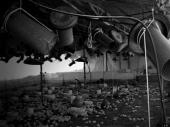
-
Graffiti / Graffiti
A man revisits his old neighbourhood by chance and finds graffiti on the wall of his old apartment. Looking at the handwriting and contents, he assumes the writer to be a woman and begins to imagine.
Director/author: Jimin Byun
Korea (South) 2010
Film & Video Video 8min.
Fruit Basket
-
Gyre / Gyre
Luminous white, diamond-shaped forms glide from right to left across a jet-black plane in Cinemascope format. Minimal variations in their movement can be seen. Subtle changes in the light and the camera's distance and angle transform this presumably abstract animation into a concrete setup for a filmic and architectural experiment. (Norbert Pfaffenbichler)
Director/author: Björn Kämmerer
Austria 2010
Film & Video 35 mm 9min.
Remote Control
-
Hajde da se igramo / Let's Play Games
All boys play with them. But are these toys as harmless as they seem?
Director/author: Marko Ubovic
Serbia 2010
Film & Video Video 5min.
Media Campus: Over the Edge
-
Hakusei no Eiga (Cinema of Stuffing) / Cinema of Stuffing
A girl performs in nature the myths and rites of her inner self and the Japanese culture.
Director/author: Rei Hayama
Japan 2010
Film & Video Video 12min.
Nippon Conception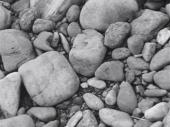
-
Heliocentric /
Heliocentric uses time-lapse photography and astronomical tracking to plot the sun's trajectory across a series of landscapes. The entire environment seems to pan past the camera whilst the sun stays in the centre of each frame, enabling us to gauge the earth's rotation and orbit around the sun. As the Sun's light becomes disrupted by passing weather conditions and the environment through which we encounter it, it audibly plays them as if it were a stylus. The 'heliocentric' view of the universe was debated from the third century BC onwards and remained contentious into modern times.
Director/author: Ruth Jarman & Joe Gerhardt
United Kingdom 2010
Film & Video Video 15min.
Light Years
-
Helsinki-Teheran / Helsinki-Tehran
Between places. Between people. Helsinki-Tehran is a cinematic study on immigration and memory - on the shared verbal and nonverbal knowledge and emotional understanding which travels with displaced people from one generation to another. Repeated themes in Saiyar´s art work are people’s means or lack of means to operate in their communities and borders of identity, which mirror the traces of other people, cultures and common routines in us.
Director/author: Azar Saiyar
Finland 2009
Film & Video Video 22min.
Eye Contact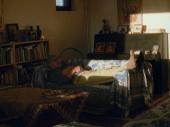
-
Horizontal Intimacy / Horizontal Intimacy
Filmed in the chilly, indeterminate locale of airport terminals from around the world, Cho's surreptitious footage of travellers biding their time captures the ominous quietude unique to that space. A set of red orbs seem to stare back, eerily calling to mind the red eye of HAL from Kubrick's 2001. Perhaps these ›eyes‹ match the artist's role as an outsider looking coolly upon an unfamiliar world, longing for a communion that will always be disappointed in such a transient realm.
Director/author: Seoungho Cho
USA 2010
Film & Video Video 8min.
This is Media Art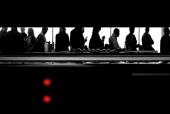
-
Hortus Harare / Hortus Harare
The Botanic Garden of Harare was founded in 1962 as a model of the natural landscape of Zimbabwe. Three years later a war started in the real bushlands. In 1979, the Zimbabwean liberation war ended, overcoming the apartheid system of former Rhodesia and appointing the liberation leader Robert Mugabe as president – who is still in power today. The war had taken place far away from the cities in the bush lands all over the country. In this natural landscape, traumatic scenes of violence and unimaginable atrocities were committed. It has never been officially reported to the Zimbabwean public - until now.
Director/author: Andreas Wutz
Spain 2010
Film & Video 16 mm 5min.
Grey Gardens
-
House in the North Country / House in the North Country
House in the North Country is based on a play by Talaya Delaney about a sister's denial of her brother's death.
Director/author: Kevin Jerome Everson
USA 2010
Film & Video 16 mm 9min.
I Witness
-
I am micro / I am micro
Strictly non-narrative, the film mixes pieces of documentary, fiction and philosophical comment. Shot in the passages of abandoned film labs, in disintegrating cinema halls and behind the scenes of a low-budget film crew, the film is an experimental essay about filmmaking, the film form and the spirit of independent cinema in India.
Director/author: Shumona Goel & Shai Heredia
USA 2010
Film & Video 16 mm 14min.
Light Years
-
I Don't Care / I Don't Care
A dream, nice and scary. Caught, unfree, paralysed. Mysterious links. Memory playing tricks. Lost game. Why? We? What? What for? Fatal spider, fatal web. One loves, one hates. Shots. Dead. Never mind.
Director/author: David Jansen
Germany 2010
Film & Video Video 4min.
Media Campus: Over the Edge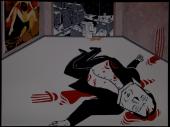
-
In Kepler's Dream / In Kepler's Dream
The camera circles the planet almost 360 degrees, and we experience the time from dawn to just before the next dawn. The orbital speeds of satellites follow Kepler's laws. The main technical theme of this work is a very simple light and shadow play in a planetary system.
Director/author: Yoshiki Nishimura
Japan 2010
Film & Video Video 3min.
Nippon Conception
-
INTERVIEW #3 / INTERVIEW #3
Sebastian Urzendowsky, the successful young German actor, is answering questions. More than just routine? (Interview: Dietrich Kuhlbrodt)
Director/author: Marlene Denningmann
Germany 2011
Film & Video Video 5min.
Media Campus: 100 Jahre Hollywood und seine Folge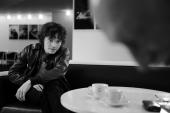
-
Invitation / Invitation
›The Iraqi People have no hospitality-facilities for the Iranian caravans of people coming to Karbala to pray and praise the Iman Hussein. One reason is the American army which occupy their country. But still thousands of pilgrims cross the Iranian–Iraqi border and to Karbala by foot.‹ Payam Zeinalabedini The filmmaker makes this journey herself for the first time in memory of her grandmother. The camera is the third eye on this pilgrimage, which creates more than one serious problem for the people, due to the unresolved political situation in Iraq.
Director/author: Payam Zeinalabedini
Iran 2009
Film & Video Video 30min.
Eye Contact
-
Isle Of Lox / Isle Of Lox
A girl and ›The Reflektor‹ are washed ashore on a beach. Strangely attracted by ›The Flags‹ and uncanny sounds, she starts exploring the island she has become stranded on. When she picks ›The Fruits‹ from ›The Tree‹ of sound, she is instantly transposed to a mysterious house = ›The Transformer‹. This is when she becomes aware of her transformation: she is now the keeper of the sound crown, she has become the fruits electric girl.
Director/author: Leyla Rodriguez & Cristian Straub
Germany 2010
Film & Video Video 3min.
Fruit Basket
-
It, Heat, Hit /
Innocent and pleasing images, such as a swimming frog or snowy street scene, are followed by statements of love and implied violence. These are inter-cut with strange, disconnected images, such as close-ups of flowers, body parts or food. The mood of the film gradually becomes darker and more unsettling, though nothing is stated directly. The growing intensity of the film is reinforced by the oppressive rhythm of a drum which accompanies snatches of music and speech. As with Prouvost's other films, the pace tests the limits of perception and makes it hard to take in every image and comment.
Director/author: Laure Prouvost
United Kingdom 2010
Film & Video Video 6min.
Fruit Basket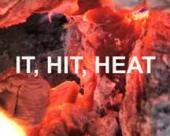
-
Jalopy Hour / Jalopy Hour
Jalopy Hour was conceived as a TV series shot in different American cities, exploring their cultural histories by the use of an absurdist lexicon borrowed from Ernie Kovacs, Lord Buckley and Buster Keaton. They describe New Orleans as ›the only city where Jalopy Hour could be filmed, the only (place) possessing the sense of stepping into another time, of preserved antiquity and colonial decay, of conflict resolution reached through the mouth of a bottle.‹ - Caspar Stracke
Director/author: Owen O'Toole & Jeffery Plansker
USA 2010
Film & Video Video 14min.
Tincture Time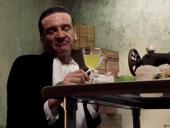
-
Juanita /
›In an associative manner,Nina Yuen places several stories side by side: stories of death and its rituals, of growth, bloom and decay.Wearing a little black dress, she herself plays the various roles in the film. She plays Juanita, the cat that is being buried, with three pink flowers being placed on her grave. Or she is her dead mother who appears in a tree after her death. She also plays someone who returns to the place in the river where she thinks she will die. This time the artist has not built a set in her studio or another inside location; everything is happening outside, in the lushness of nature. While the voice-over links the diverging stories together, you wonder if these are stories from the artist's personal life or if it is all made up.‹ Netherlands Media Art Institute, Nanda Janssen.
Director/author: Nina Yuen
USA 2010
Film & Video Video 5min.
Flesh for Fantasy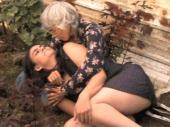
-
La fosse aux lions / La fosse aux lions
Home movies never depict catastrophes, and that although most families' narrations consist of nothing but catastrophes. The camera is turned off when the arguments begin. Only children seem to have the privilege of crying on camera, but in most cases surrounded by adults smiling soothingly. The non-depiction of the catastrophe is also the significant characteristic of Werner Herzog's film ›La soufrière‹, a report on a volcanic eruption that does not take place.
Director/author: Philipp Hauss
Austria 2010
Film & Video Video 5min.
Land's End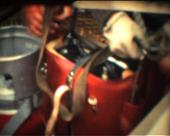
-
Langbeat / Langbeat
This experimental music video project is based on the idea that every language has its own musicality and rhythm. A divided screen where the music builds up from those sounds of closeups of human mouths spelling words of several different European languages. The words create a rhythm, the rhythm becomes music.
Director/author: Daniel Szollosi
Hungary 2010
Film & Video Video 1min.
Pop til u drop -
Laokoongruppe: Walzerkönig / Laokoongruppe: King of the Waltz
Perfect stop-motion animation, ›location‹, the desk. The singer Karl Schwamberger (Laokoongruppe) performs as an animated figure on a stack of post-its, as the lyrics to Walzerkönig roll past on a till roll. Alongside there is a video within a video, a train journey drawn with a highlighter, and from time to time the director reveals himself – grabbing his coffee cup, or remodeling the film set as a miniature home disco. (production note)
Director/author: Adnan Popovic
Austria 2009
Film & Video Video 5min.
Pop til u drop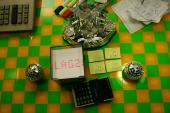
-
Lebensader / Lebensader
A little girl finds the whole world in a leaf.
Director/author: Vera Angstenberger
Germany 2009
Film & Video Video 5min.
Media Campus: Hitch-Hiking to Media Art
-
Lesser Apes /
A winningly oblique narrative of forbidden love, Lesser Apes offers an inter-species fairytale between primatologist Farrah and the female bonobo (ape) Meema. Farrah extols the virtues of language as it offers the hope of empathy, but at the same time it pushes her out of her body, which she can recover only through a series of transgressions. These are offered in an impressionist collage – misted landscapes and time lapsed animals rotting, balloons caught in a rainshower. But most harrowingly there is a stunned vérité encounter with Vey Duke lying comatose and jaundiced in a hospital bed, very near death, while her partner, Cooper, looks on with a face that signals that everything will be alright, even in the face of overwhelming evidence to the contrary. These lyrical diary moments are filled with the punctum, with the sharp point of a picture that looks back, raw memory fragments that hurt the viewer to witness. They are interwoven with a-go-go animations that run beneath Farrah/Emily’s sing songs, offering musings on the trials of living in a body, whether via animal love or addiction. ›And nobody wants to die/And everyone wants to get high/But we can’t get high all the time…‹ – Mike Hoolboom
Director/author: Emily Vey Duke & Cooper Battersby
Canada 2011
Film & Video Video 19min.
Flesh for Fantasy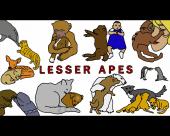
-
Lighthouse /
Lighthouse is about the labor system and the factory town in Southern China and how individualism is influenced by the social and political infrastructure. Guangdong District is the largest Metropolitan area in one of China's wealthiest provinces, and one of its cities, Guangzhou, attracts farmers from the countryside looking for factory work. The viewer is led to actively compose narratives through the poetic and the sublime images. It opens borders that separate cultural, linguistic and historical differences in the global labor systems. China/USA 2009.
China (PRC) 2009
Film & Video Video 16min.
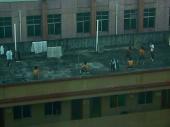
-
Lightning Strikes / Lightning Strikes
A Super 8 paranoia extravaganza to the sounds of Felix Kubin ...
Director/author: Soenke Held
Germany 2010
Film & Video Video 4min.
Pop til u drop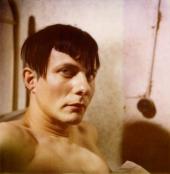
-
Lilong / Lilong
Lilong settlement is a ground-related housing pattern, typical of Shanghai. Today, as the city's urban restyling is taking place, this typology is quickly disappearing. Artificially landscaped courtyards of these new estates are rarely used as meeting places by their inhabitants, who prefer public parks and other outdoor spaces for their daily social activities. Lilong is a peculiar collection of individual portraits, of ambiguous repetitive gestures, shadowed by images of high-rise buildings.
Director/author: Valentina Ferrandes
China (PRC) 2010
Film & Video Video 11min.
Grey Gardens
-
Loading / Loading
Every DVD player has a welcome screen: ›Welcome, Play, Pause.‹ Only this very player has a life of its own.
Director/author: Philipp Czogalla
Germany 2010
Film & Video Video 1min.
Media Campus: 100 Jahre Hollywood und seine Folge
-
LOOM / LOOM
Loom tells the story of a successful catch. A moth being caught in a spider’s web. Struggling to escape, the moth’s panicky movements only result in less chances for survival. What follows is the type of causality everyones expecting. The spider appears, claims its prey and feeds on it. The way nature works. But it's the point of view that creates an intense relationship between the hunter and its victim. There is much more to explore, much more to feel if one takes the time to really experience the content of a split second.
Director/author: Vera Angstenberger
Germany 2010
Film & Video Video 5min.
Media Campus: 100 Jahre Hollywood und seine Folge
-
Loopic cube / Loopic cube
Geometric patterns drawn on the surface of a white cube revolve in a circle. The cube itself also rotates and then multiplies, so that the patterns' appearance is transformed, based on how each cube aligns with its neighbours. Experimental animation made using paper models.
Director/author: yoshihisa nakanishi
Japan 2010
Film & Video Video 5min.
Nippon Conception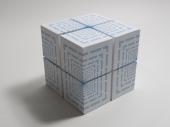
-
Lose This Child / Lose This Child
As the sun goes down over the ocean, the sand comes to life and takes on the forms of an entire mini eco-system of aquatic life. Sea turtles are born, eels emerge to pursue their prey and Mother Earth orchestrates it all. Music video for Lose This Child by Eatliz Band
Director/author: Yuval & Merav Nathan
Israel 2010
Film & Video Video 3min.
Pop til u drop
-
Low-Tech / Low-Tech
This animation was made using low-tech equipment. It aims to look at modern technology from a humorous angle. It uses perspective parallax and traditional stop-motion technique to mimic modern high-end technology. Even the music is made using the simplest technique by recording toy music and vocal singing.
Director/author: Hui-ching Tseng
Taiwan 2010
Film & Video Video 3min.
Fruit Basket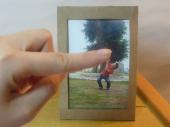
-
Meinungsmeer / Meinungsmeer
Lea is standing in front of the coffee shelf in a supermarket. There are so many types of coffee to choose from, she’s confused. How can such a simple thing as coffee overwhelm her? Why can't she deal with her life any more? Is it too fast or is it she who is too slow? But it ought to be quite easy to form an own opinion! ... or not?
Director/author: Florian Schnell & Martin Minsel
Germany 2010
Film & Video Video 5min.
Media Campus: Over the Edge
-
Murhatuolit / The Murder Chairs
The Murder Chairs tells seven stories about seven different chairs. They are stories about memory and the hidden violence that surrounds us everywhere.
Director/author: Nalle Mielonen
Finland 2010
Film & Video Video 4min.
Media Campus: Prepilog
-
Muteki no Hito (Invincible Mighty Man) / Invincible Mighty Man
People out in the street, not paying attention to their surroundings. One is reading a book, another is barring access to his external world with headphones. The place being shielded from external noises is called ›personal space‹ and has been growing wider and wider... into cars and the internet. They socialize with other people while remaining in their own personal space. But because they are isolated from each other, they become invincible.
Director/author: Yasuto Yura
Japan 2010
Film & Video Video 6min.
Nippon Conception
-
My Film Festival Entry / My Film Festival Entry
The world has become too complicated. I now seek salvation in simple and pure things. Like this documentary.
Director/author: Neil Needleman
USA 2010
Film & Video Video 3min.
This is Media Art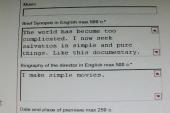
-
n gschichtn /
›n narratives‹ is a surreal, offbeat humour, low-key comedy cartoon shown in amazing MULTICOLOURWIDESCREENMADNESSTECHNOLOGY. Episode one is about causality errors, lookism, four-colour-pens, lunacy and the complexity of life in general.
Director/author: Eva Becker
Germany 2010
Film & Video Video 17min.
Media Campus: Hitch-Hiking to Media Art
-
Natascha / Natasha
Natascha, eight years old, has many friends and lives in Uniza, a village in one of the most desolate parts of Russia. Most of the windows of the house where she lives are nailed shut, except for one room with four iron beds, a chest of drawers and many cardboard boxes. One of these boxes contains Natasha's clothes. She is just puttin’ on her prettiest dress. She is openminded, chatting away frankly and unintentionally. But what she says affects you in an unexpected way. An experimental documentary, since the film is based on a coincidental encounter, and results from a game with Natasha, a microphone, a Super 8 camera and a camera.
Director/author: Anja Strelets
Germany 2010
Film & Video Video 9min.
I Witness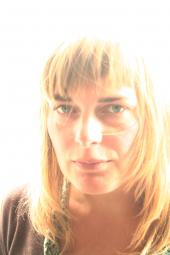
-
neue Autorenwünsche / new desires of an author
As chance is limited by a bubble of opportunity, the various levels of this short film proceed. The search that also impels this film is that of the emergence of a story. Raw footage from another amateur short film is used, one of the many debut works in existence. Collaged and compressed with inner and outer voices, an unfamiliar visual piece emerges. The 1960s authors’ debate is repositioned: it is not the author who is explored here as the driving force, but the author’s compulsiveness. In search of "film", it also reveals the necessity to exercise discipline. And the dominant audiovisual phenomenon as we know it is both compulsive and disciplined.
Director/author: Christian Bäucker
Germany 2010
Film & Video Video 14min.
Media Campus: 100 Jahre Hollywood und seine Folge -
Neutral / Neutral
Neutral is a video that works with the narrative of a couple's car breaking down, and is engaged mostly with the repetition of their actions in this sort of limbo period of waiting for assistance. Within this there is a kind of heightened awareness of their surroundings, which becomes even more so by the occurrence of inexplicable things
Director/author: Dan Walwin
United Kingdom 2010
Film & Video Video 11min.
Remote Control
-
Niele pelkosi / Swallow Your Fears
A young woman plays a game with fear and ends up being swallowed by it. The work is a short animation on how to live with fear. A dialogue between photographed and drawn materials raises the question of what is real and what is imaginary in our experience.
Director/author: Laura Rytkönen
Finland 2010
Film & Video Video 2min.
Media Campus: Over the Edge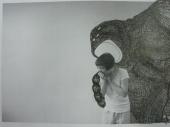
-
No Blood In My Body / No Blood In My Body
›Thomas takes the train, goes to work, hangs around in a wasteland. He promises Claudia that he will take much better care of her than her American family, that she is beautiful and that she saved him. I film them while they are getting high together. After the injection, I share this very moment when they are floating apart, and their solitude when one or another leaves too far away. The shot seems to be what they share the best, but it’s also what drives them further and further apart. The movie settles down into a new temporality, in the shadowy light of the bedroom, in the darkness of the shed you can no longer distinguish night from day. This story isn’t built on linearity, on the repetition of their daily life but, on the contrary, on the sudden appearance of what we’ve missed, and what suddenly explodes in front of us. I’m constantly playing with the boundaries that exist between a real event, caught in the rush of the moment and the reconstruction of what has already happened two days, a week, a month previously. Thomas and Claudia aspire to be free. One day, Claudia overdosed and sank into unconsciousness. Thomas is helpless and angry, and knows that she’s driving herself away from him.‹ Laure Cottin
Director/author: Laure Cottin
France 2010
Film & Video Video 28min.
Daysleepers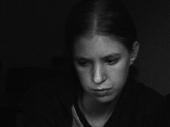
-
Nostalgico del Apocalipsis / Nostalgic of the Apocalypse
What does the Apocalypse mean to you? What would you do if the Apocalypse were next week? A documentary short movie searching for the things that really count. About the desires, wishes, fears and hopes of people of different nationalities. And a slice of nostalgia for 2012.
Director/author: Christina Stihler
Spain 2010
Film & Video Video 7min.
Media Campus: Over the Edge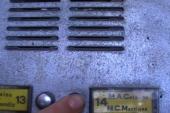
-
Notebook Phase / Notebook Phase
A minimalist animation that unites complementary opposites through movement and sound. It portrays a whimsical figure in between nature and technology, noise and silence, structure and freedom. Essentially, the whole animation, in which a figure juggles with a circle and a notebook, is based on a single movement pattern varied only through minimal transformations. Both the movement of the figure and its sound are controlled by pure sine waves.
Director/author: Philipp Artus
Germany 2010
Film & Video Video 6min.
Media Campus: Over the Edge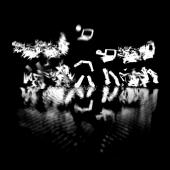
-
Nur noch 5 Minuten / Just 5 more Minutes
This is a film you have to take time for. As a study of time in cinematic perception, Viennese media artist Gerald Zahn visualises 5 minutes by filming a person holding his breath for the duration of the film. In contrast with the casual disregard for mere 5 minutes in the film title, the film fills this period with significance. The emotional turmoils on the actor's face as he fights through every second on the stop-watch, make 5 minutes a cinematic era of tension, doubt and expectation.
Director/author: Gerald Zahn
Austria 2010
Film & Video Video 5min.
Daysleepers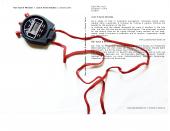
-
NYX / NYX
Where in Greek mythology, the earth mother Gaia gives us the topos of the city, Nyx the goddess of the Night gives us the inner realm. The progeny of Nyx, a potent crowd embodying human experience, include old age, rage, strife and friendship. Thanatos, the god of quiet death, his twin Hypnos and his wife Pasithea, the goddess of hallucination, begin the Odyssian journey of a young man from Kreuzberg along the U7 line to Spandau, which becomes the river Lethe, the river of forgetfulness. The hero’s name is Furat, the Arab form of Euphetes, the holy river. Furat sleeps on the train, intoxicated after a party, and finds himself in various parts of West Berlin in direct confrontation with, or under the spell of, various Childs of The Night. GB / D 2010
Director/author: Claire Hooper
United Kingdom 2010
Film & Video Video 22min.
House of Mirrors
-
Oh / Oh
›Oh‹ seeks to reanimate the ambitious, utopian spirit of renegade architect Etienne-Louis Boullée (1728- 1799) and is true to the spirit of the utopian architectural tradition Boullée is part of. Although the historical reference to an unrealised architectural project adds a nostalgic, melancholy twist to ›Oh‹, De Clercq nevertheless stays true to her well-documented passion for images of futurity.
Director/author: Anouk De Clercq
Belgium 2010
Film & Video Video 8min.
This is Media Art
-
Omokage (Remains) / Remains
My grandfather, who was a photographer, died about ten years ago. He left behind many forgotten photographs from the time when I was a child.
Director/author: Maki Satake
Japan 2010
Film & Video Video 6min.
Fruit Basket
-
Pain So Light That Appears As Tickle / Pain So Light That Appears As Tickle
Pain is slowed down in slow motion up to the sensitivity threshold and is sold as an everyday anesthetic.We browse through ready-made catalogues of horror, complete with instructions for use,we order attractive idea-images; we wish to leave our bodies and become the image for a change. Watching a film, we forget about ourselves, pretending not to be interested in the content; in fact, we are interested in the hypnotizing, pulsating light, which is when we discover our magical and tribal conscience and repressed fear of life.
Director/author: Dalibor Baric
Croatia 2010
Film & Video Video 4min.
Flesh for Fantasy
-
Phantom Ride / Phantom Ride
Phantom Ride is a short video made in 2010 at KASK, Ghent. Elias filmed landscapes and recorded sounds at various places in Belgium and used footage found on the internet. A new landscape is evoked by structurally re-arranging these video files. As a result of this change, the recognisable landscape fades and becomes pure image. Image and sound together results in movement, or is it a standstill?
Director/author: Elias Heuninck
Belgium 2010
Film & Video Video 9min.
Media Campus: Hitch-Hiking to Media Art
-
pheres / pheres
Experimental music video that plays with lighting and reflections. The film creates a simile between natural beauty and technical beauty. The naturally perfect spheres are getting destroyed by three different methods, which represent classic industrialism, modern medicine and nanotechnology.
Director/author: Stefan Voigt
Germany 2010
Film & Video Video 4min.
Media Campus: Over the Edge
-
Pixels / Pixels
New York invasion by 8-bit creatures!
Director/author: Patrick Jean
France 2010
Film & Video Video 2min.
Fruit Basket
-
Plänterwald / Plänterwald
In Plänterwald the protagonist is a former GDR amusement park abandoned after unification and sitting motionless at the edge of the city of Berlin. The work plays on the absurdity of use of force in relation to the decay and obsolescence of the site as the park's policed borders isolate it from public space. The video quietly, yet relentlessly - like the defunct rollercoaster - echoes the rumbles of deep social and political fault lines and their explosive potential.
Director/author: Lynne Marsh
Germany 2010
Film & Video Video 17min.
Grey Gardens -
Players / Players
›Players‹ portrays 6 poker professionals who live among a large poker community in Bangkok. For them, playing poker is just a way to make money rather than a passion, but the rules that govern their community follow the logic of the game. They use probability theory, the fundamental theory of poker, to ensure they treat each other fairly and that everyone contributes equally. The systematic, analytical way in which these poker players look at everyday life may seem absurd, and their life style is easy to judge, but this shock may be due more to them ignoring their original society than to the way they have built their own one.
Director/author: Mikko Mällinen
Finland 2010
Film & Video Video 7min.
Green Screen
-
Portrait of Karl Marx As A Young God / Portrait of Karl Marx as a Young God
The images visualise specific reminiscences from recent German history, while the voiceover extends and counteracts these images with a multitude of interpretations. This ›fictitious miniature‹ is treated as documentation about events which never took place, but which just as well could have happened.
Director/author: Gernot Wieland
Germany 2010
Film & Video Video min.
Hard for the Money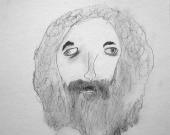
-
Primetime /
First you could think that the video is an end title of a movie. On closer inspection you realise that the words are write-ups of movies. It is not clear where they come from. But you could say that the movie is: clear, crass and clever: a stroke of genius!; really gripping; completely baseless; far too long; much too sentimental; or , deeply religious; at least the video primetime by Thomas Judisch is highly moving; pretty trivial; funny and intelligent...
Director/author: Thomas Judisch
Germany 2009
Film & Video Video 2min.
Media Campus: 100 Jahre Hollywood und seine Folge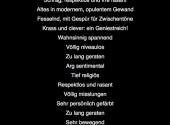
-
Pulnoc (Midnight) / Midnight
This visually remarkable exploration of the social and psychological implications of light and darkness enters the world of ›darkers,‹ looks at the energy crisis, and presents the director's video journal of life in darkness. In a fragmentary chiaroscuro mosaic, shapes and situations come and go like thoughts flowing through the tranquil mind of a night sky observer. Darkness is both the theme and the stylistic point of departure of a filmic reflection on the supposed benefits of modern, far too illuminated civilization in which people are doomed to wander among ubiquitous lamps ... a documentary about different kinds of eclipse.
Director/author: Klára Tasovská
Czech Republic 2010
Film & Video Video 40min.
Into the Dark
-
Rehearsal / Rehearsal
The Marshmallow Bear rehearsals.
Director/author: Paul Leyton
Germany 2010
Film & Video Video 2min.
Pop til u drop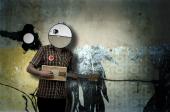
-
Reise zum Mars / Journey to Mars
The film is based on a script from 1920s composed by Walter Dexel, a constructivist artist. In a concentrative form Sebastian Binder tells an adventurous story of three travellers to Mars. The band Maren Montauk composed the congenial sound. This first film adaption puts across the naive, imperial and aesthetic fantasies that existed at the start of modernity.
Director/author: Sebastian Binder
Germany 2009
Film & Video Video 8min.
Media Campus: 100 Jahre Hollywood und seine Folge
-
Satellite, As Long As It Is Aiming At The Sky / Satellite, As Long As It Is Aiming At The Sky
We enter the Los Angeles-based Iranian satellite TV stations. The video is a mediation of geography, community and politics in a critical state. Initially exile television stations, they generate a tele-visual micro universe that compensates for their (cultural, geographical and political) deficits by constantly referring to and commenting on its own production and reception. This ›self-mediation‹ produces a sense of immediacy and locality across the TV stations, which increases at times of political and economic upheaval. The video captures these TV stations during the time of the 2009 elections in Iran. The political crisis at home inevitably enters these stations and, in turn, articulates the TV stations’ own crisis.
Director/author: Nasrin Tabatabai & Babak Afrassiabi
Netherlands 2010
Film & Video Video 28min.
Green Screen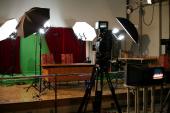
-
Satisfaction /
A mashup of commercials whose purpose is to present food as a detonator for pleasure. Satisfaction suggests that the pleasure of eating goes beyond the act, but can cause other pleasures such as fantasy, fun and perversion.
Director/author: Sebastián Ruiz Ibarra
Mexico 2010
Film & Video Video min.
Media Campus: Hitch-Hiking to Media Art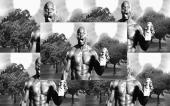
-
Sea Swallow'd / Sea Swallow'd
Sea Swallow'd charts the choppy waters of gut feelings, capturing the flotsam and jetsam of impulse, desire and fights to the death. A film by Andrew Kötting and Curious shot as a series of lapping and flowing, irregular chapters, which borrow their titles from Moby Dick. The film is image and urge driven, giving the viewer the feeling of beach-combing for different fragments of treasure on the shoreline. A highly experiential journey mixing 16mm B&W footage with video and archival footage.
Director/author: Andrew Kötting & Curious
United Kingdom 2010
Film & Video Video 18min.
Flesh for Fantasy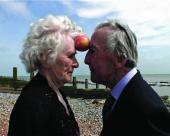
-
Seizure / Seizure
The experimental Seizure is about control and losing control. How much control do we really have in our lives, or how much do we think we have? What is control? Is control real? What is real? What is fake? What is reality? What is illusion?
Director/author: Lars Tae-Zun Kempel
Germany 2010
Film & Video Video 7min.
Media Campus: Hitch-Hiking to Media Art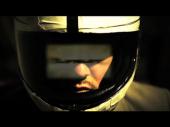
-
sense+innocence / sense+innocence
A scientist experiments on a rodent. The animal seems to think about the meaning of hope, but can't come to a conclusion.
Director/author: Stefanie Ernst
Germany 2009
Film & Video Video 4min.
Media Campus: Hitch-Hiking to Media Art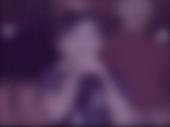
-
Servants of Mercy / Servants of Mercy
Fern Silva's piece ›Servants of Mercy‹ is a poetic assemblage of religious rites performed in Portugal, depicting religious pilgrims with an intimate objectivity that allowed the viewer to approach the film with curious awe.
Director/author: Fern Silva
Portugal 2010
Film & Video 16 mm 14min.
Signs of Life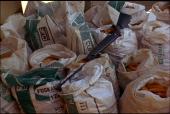
-
Sidewalk Stories / Sidewalk Stories
The story starts from the day I came to Germany in 2008. Walking through the days finding and collecting founded objects on the streets that stimulate memories. Questioning myself, who I was and who I am, in a new place, where the way people survive in their society is really different.A story that comes as an endless diary.
Director/author: Rizki R. Utama
Germany 2010
Film & Video Video 9min.
Signs of Life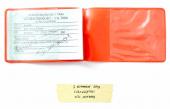
-
Smelly Sunday Girl / Smelly Sunday Girl
A small team is on its way to finding an ice cream duck.
Director/author: John Deneuve
France 2010
Film & Video Video 3min.
Pop til u drop
-
Smolarze (Charcoal Burners) / Charcoal Burners
›Every summer, Marek and Janina work as charcoal burners in the Bieszczady Mountains. Far from civilization, in the heart of the mountains, they live according to the rhythm set by nature. The documentary joins the man and the woman from dawn till dusk, observing the slow passage of time. A visual anthem to the beauty of life.‹ - Vaiko Edur, Parnu Film Festival
Director/author: Piotr Zlotorowicz
Poland 2010
Film & Video Video 15min.
Grey Gardens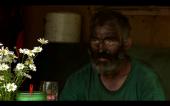
-
Soaring Through The Starlight / Soaring Through The Starlight
Singer KRAUSE, in search of her alter ego in a vast and gloomy metropolis, confronts her counterpart with destructive consequences.
Director/author: Nils Mühlenbruch
Netherlands 2010
Film & Video Video 4min.
Pop til u drop
-
Somewhere only we know /
Standing on the brink of elimination, the suspense threatening to fracture their composure, contestants wait and see if they will be going home. The audience at home is also waiting... Part two of Bearing Witness Trilogy concerned with how we, as a culture, watch ourselves, especially in moments of great emotional significance. With footage culled from mainstream media and television, the single-channel videos (The Eternal Quarter Inch, Somewhere only we know, The Burning Blue) distill moments of sincerity from perhaps insincere sources (televangelists, reality show contestants, screensavers, B-movies). Located in interstitial spaces, these videos continually shift the role of the viewer between voyeur and participant.
Director/author: Jesse McLean
USA 2009
Film & Video Video 5min.
Green Screen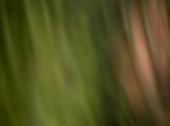
-
Stargate / Stargate
Several passengers’ feet are dangling from gondolas of the fairground ride ›Stargate‹. They’re excited about an unusual roller coaster ride that will break down the bounds of the ego. The image increasingly fans out like a kaleidoscope. Like a cinematic mirror of the passengers’ feelings, the work always moves on the edge between the concrete and the abstract, only to finally disintegrate and vanish into nothingness.
Director/author: Pascal Fendrich & Bernd Härpfer
Germany 2010
Film & Video Video 4min.
Fruit Basket
-
Strange Lights / Strange Lights
On a winter's night, 1980, American servicemen witnessed 'unexplained lights' in Rendlesham Forest. The incident has since become Britain's most famous UFO incident. This film revisits the forest, thirty years later, in search of similarly 'inexplicable' events.
Director/author: Rosie Pedlow & Joe King
United Kingdom 2010
Film & Video Video 8min.
This is Media Art
-
Stratum / Stratum
The concept of this work is how different things look when seen from different perspectives. ›First I painted images of the geological stratum, seas, grasslands, cities, skies and clouds on a plastic board. They're painted in numerous coats, layered on top of each other. Then I filmed the painting in stop motion as I revealed the deeper layers with sandpaper. Watch how what's visible and what's hidden gradually changes.‹ Keigo Yasui
Director/author: Keigo Yasui
Japan 2010
Film & Video Video 3min.
Media Campus: Hitch-Hiking to Media Art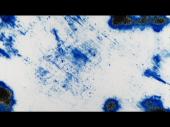
-
Stroke / Stroke
Thousands of shades of colour ascend in the flash lights of the brain until the world sinks into darkness.
Director/author: Antal Lux
Germany 2010
Film & Video Video 3min.
This is Media Art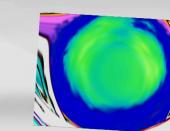
-
Styrofoil / Styrofoil
Styrofoil is a collaboration between video artist Barry Anderson and the band Monta At Odds. Combining elements of HD video and motion graphics, the video uses an overarching metaphor of water to support the rhythms and textures of the post-rock soundtrack.
Director/author: Barry Anderson
USA 2010
Film & Video Video 3min.
Pop til u drop
-
Surreal Random MMS Texts para ed Ina, Agui tan Kaamong ya Makaiiliw ed Sika: Gurgurlis ed Banua / Surreal Random MMS Texts for a Mother, a Sister, and a Wife who Longs for You: Landscape with Figures
Using a Pangasinan-language translation of Filipino-American activist Carlos Bulosan's 1942 poem ›Landscape with Figures‹ as a narration, an expatriate Filipino filmmaker working in the Middle East sends surreal, random, and found digital images of displacement and longing to his loved ones in the Pangasinan province of the northern Philippines.
Director/author: Christopher Gozum
Philippines 2009
Film & Video Video 15min.
Eye Contact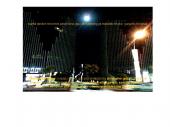
-
That Day / That Day
A few years after my mother passed away, I try to hold on to her fading image by collecting memory fragments.
Director/author: Iris Blumenshtein
Israel 2010
Film & Video Video 5min.
Media Campus: Prepilog
-
The easy Guide to Becoming a Famous Artist / The easy Guide to Becoming a Famous Artist
This is the ultimate guide for those who want to become a famous artist. It can't be that hard, can it?!
Director/author: R. M. Hausberger, J. R. Moya, M. Wendling
Germany 2010
Film & Video Video 3min.
Media Campus: 100 Jahre Hollywood und seine Folge
-
The Edge / The Edge
Nowadays, everyone’s a rock star.
Director/author: Philipp Eichholtz
Germany 2010
Film & Video Video 3min.
Pop til u drop
-
The Fang In The Void Delight / The Fang In The Void Delight
Loosely based on George Romero's NIGHT OF THE LIVING DEAD, the film title is an anagram of the infamous movie. The two parts of the video were originally constructed as a possible introduction and an alternative ending for the original movie of 1968. They bring a new point of view on a classic terror movie, playing with classic elements of fear, horror atmospheres and references to Romero's works.
Director/author: Romain Sein
France 2010
Film & Video Video 12min.
Into the Dark
-
The most beautiful view / The most beautiful view
A short movie about a girl called Mei who travels around the world and sends postcards to her old friend Lin who donated his eyes to Mei before he died. The screen is divided into two parts to illustrate Mei’s travel experiences and her writing postcards.
Director/author: Liangchuan Sun
USA 2010
Film & Video 35 mm 4min.
Media Campus: Prepilog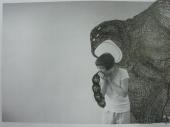
-
The Multitude Is Feverish /
The diary-based film reveals itself as a poetically sharp portrait of a person who purposely misses her connecting flight ›for no particular reason‹. Fluidly shifting between various layers of consciousness, perception, perspective and time, the borders between subjectivity and objectivity become as obsolete as those between the inner and outer world. As she is wandering through the city, we dive into the multilayered facets of a personality - her phantom thoughts - and catch a glimpse of the contradictions, struggles and desires that can lie within one person.
Director/author: Vika Kirchenbauer
Germany 2011
Film & Video Video 17min.
House of Mirrors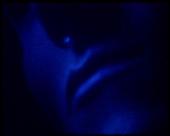
-
the silver bullet / the silver bullet
An experimental video, dealing with the concept of technological singularity, and thus the idea of the creation of an artificial smarter-than-human intelligence. The title refers to human striving for perfection, invulnerability and immortality. By juxtaposing found footage from TV commercials with self-recorded material, the work illustrates our hopes and fears regarding technological progress and the idea of the perfect human.
Director/author: Sarah Janssen
Netherlands 2010
Film & Video Video 4min.
Media Campus: Over the Edge
-
The Sower Arepo as Works a Wheel / The Sower Arepo as Works a Wheel
A festival of antique farming technology in Yuma, Colorado; a visit to Rabun County, Georgia with a story about growing up in the Southern Appalachian Mountains; and folk magic as performance, based on remedies collected in 1820 by John Hoffman in Pow Wows or, Long Lost Friend. Three parts in a film about finding the past in the present, or a message from the future.
Director/author: Marcy Saude
USA 2010
Film & Video Video 27min.
Tincture Time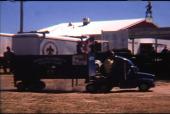
-
The Voyagers / The Voyagers
In 1977, NASA sent Voyager 1 and Voyager 2 on an epic journey into interstellar space. Each spacecraft carries a golden record album, a massive compilation of images and sounds embodying the best of Planet Earth. According to Carl Sagan, ›[t]he spacecraft will be encountered and the record played only if there are advanced space-faring civilizations in interstellar space. But the launching of this bottle into the cosmic ocean says something very hopeful about life on this planet.‹
Director/author: Penny Lane
USA 2010
Film & Video Video 16min.
Light Years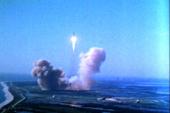
-
These Hammers Don't Hurt Us / These Hammers Don't Hurt Us
Tired of underworld and overworld alike, Isis escorts her favorite son on their final curtain call down the Nile, leaving a neon wake of shattered tombs and sparkling sarcophagi. A psychedelic homage focussing on two glamorous spheric creatures of the 20th century Liz Taylor and Michael Jackson.
Director/author: Michael Robinson
USA 2010
Film & Video Video 13min.
House of Mirrors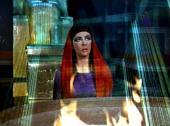
-
Threesome / Threesome
While Stefan and Paul relax sipping their cocktail, Ann-Kristin gets cosy on her couch. ›Some company wouldn't do any harm,‹ she considers, and in doing so she thinks of Stefan. He and Paul are sitting in a bar, when suddenly Stefan’s phone rings. It is an invitation from Ann-Kristin. Stefan does not contemplate for long and asks Paul to join him. Ann-Kristin is happy about the visit and kindly invites the two men to join her on the couch, where they gradually get closer to one another ...
Director/author: Johannes Dullin
Germany 2010
Film & Video Video 10min.
Flesh for Fantasy
-
ticktaktur / ticktatorship
I see a red door and I want it painted white... The protagonist is dominated by his compulsion to do everything perfectly. In the end, he becomes enslaved by this perfection. There doesn’t seem to any hope for a cure... no colours anymore, I want them to turn white.
Director/author: Igor Sirjanow
Germany 2010
Film & Video Video 11min.
Media Campus: Over the Edge
-
Tranquility / Tranquility
Sun, beach, the sea: most people associate these with carefree days off work, free from civilization’s demands. An image of a woman lying on her back in the sand, next to her an abandoned beach toy and nothing but sun and wind above, represents the point of departure for an adventurously long journey, one produced by the film material to be found here. (Bert Rebhandl)
Director/author: Siegfried A. Fruhauf
Austria 2010
Film & Video 35 mm 6min.
Light Years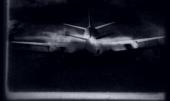
-
Transformance / Transformance
Transformance is a video-eventwork that activates and documents a four-month durational performance. Over this period of time, Nina Kurtela establishes a daily practice of visiting and witnessing the changes at the building site of the Uferstudios, Wedding, Berlin - the warehouse for the repair of trams and buses becomes a dance institution. She is spectator to the making of an art institution, the making of the theatre stage.
Director/author: Nina Kurtela
Croatia 2010
Film & Video Video 9min.
Light Years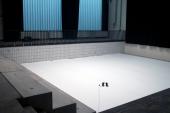
-
Triband /
Triband expands the projection screen literally into the viewers’ heads, as the perceived image is not present in the actual animated footage. Multiple instances of objects and scenes appear simultaneously in a blur of truth, like a distant memory, where uncertainty permeates the verity of the beholder.
Director/author: Sebastian Buerkner
United Kingdom 2010
Film & Video Video 4min.
Into the Dark
-
Triumph Of The Wild / Triumph Of The Wild
Triumph of the Wild explores the impulse of hunting and the resiliency of the people and animals in times of battle. The film covers over 400 years of history in ten minutes using stop-action animation. Paintings and puzzles in the film evolve from animal to human, from hunted to hunter, from wilderness to war zone, and from the horrific to the idealistic. (IFFR 2010).
Director/author: Martha Colburn
Netherlands 2010
Film & Video 35 mm 5min.
Fruit Basket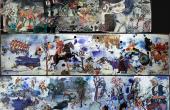
-
Tropic Pocket / Tropic Pocket
The Chocó area in Colombia remains isolated between sea and forest. There, religious missions, military operations and tourist projects, amongst others, have come and gone, coexisted and ignored each other at the same time. Judgment put aside and free of narration, Tropic Pocket captures images to witness and justify these actions, leaving behind their argumentative weight. The spectator will decide which amongst these layers of reality and mystification are the most deceitful.
Director/author: Camilo Restrepo
Colombia 2010
Film & Video Video 13min.
I Witness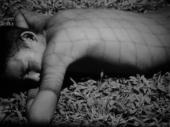
-
Trypps #7 (Badlands) / Trypps #7 (Badlands)
"Trypps #7 (Badlands) zeigt mit einer intim anmutenden langen Aufnahme den LSD-Trip einer jungen Frau im Badlands National Park, bevor er in eine psychedelische, formale Abstraktion der weiten Wüstenlandschaft übergeht. Russell beschäftigt sich mit dem Gedanken romantischer Erhabenheit, phänomenologischer Erfahrungen und säkularem Spiritualismus und setzt mit dieser Arbeit sein ungewöhnliches Forschen nach den Möglichkeiten des Kinos als Ort der Transzendenz fort.‹ Michael Green, MCA Chicago "Trypps #7 (Badlands) charts, through an intimate long-take, a young woman's LSD trip in the Badlands National Park before descending into a psychedelic, formal abstraction of the expansive desert landscape. Concerned with notions of the romantic sublime, phenomenological experience and secular spiritualism, the work continues Russell's unique investigation into the possibilities of cinema as a site for transcendence." Michael Green, MCA Chicago
Director/author: Ben Russell
USA 2010
Film & Video 35 mm 9min.
House of Mirrors
-
Turning Torso / Turning Torso
The Turning Torso is the new landmark of the Swedish city Malmö. It's a 190 meter high skyscraper that represents the form of a twisting human being. ›I usually don’t want to turn around, because I am afraid of facing the danger.‹
Director/author: Stefan Neuberger
Germany 2010
Film & Video Video 4min.
Green Screen
-
Tusslemuscle / Tusslemuscle
The work presented is a reflection on humanity's ecological relationship and the ritual of restoration. The violent pulse speaks with a sense of urgency and chaotic struggle while the hypnotic arrangement keeps us in blinding awe as to its condition. TUSSLEMUSCLE is composed of 7,000 single frames, which were appropriated from view-master reel cells. Each frame was hand-spliced to create a linear film-strip. Jacob Long created the score.
Director/author: Steve Cossman
USA 2009
Film & Video 16 mm 5min.
Fruit Basket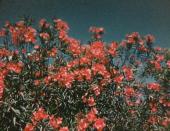
-
Unter Kontrolle / Under Control
In his documentary film, Volker Sattel makes it quite clear that the technology of the socalled peaceful use of nuclear technology originates from the Cold War era, the 1950s. Sitting safely on our cinema seats, the film takes us on a journey through the German landscape of nuclear power stations, the insides of which appear all too frequently to be reminiscent of Kubrik’s 2001. The film starts with a promise. Something glows, vibrates for a moment, builds structures of beauty – a ›light‹, that our eye cannot see, the wild heart of a technology, which circulates around the term ›control‹ since its inception. We are gazing at the unfinished monument of a glorious future that is fascinating till today, in spite of its cracks and dangerous contradictions. Under Control bears in mind how big the effort is, this science fiction which means: ›peaceful‹ use of nuclear energy, to reconcile with reality. The film explains this world in small doses, providing insight into the secretive life behind the walls of German nuclear plants. We see glistening bright control centers, Decontamination doors, fog machines, to enter the depth of the deposits to experience the power of superhuman rationality that supposes to keep the power of the smallest parts under control. Not coincidentally the architecture and the props are reminding of a space flight on earth. Even in this world mistakes are ›forbidden‹. But as we are already having trouble to accept the idea of a journey over decades, the half-live periods of radiant substances burst our bonds of imagination. People – usually men – try to be in control of the antiquated technical plants, and reassure us, almost continually but also with great conviction, that the system created by humans can manage itself, control itself and, if necessary, switch itself off at any time. ›If faults occurred in the past, they were always caused by the inadequacies of the operators,‹ is the gist of one responsible official’s assertion. Sattel refreshingly lets the statements pass without comment; it is the magnificent film images alone, compiled over three years of research, that cause us to doubt the narration. At the end remains the sensation of futility. It almost seems as if we have disappointed the nuclear power, not the other way around. The miracle of this technology is waiting patiently for a new human being that is more rational – and not afraid of eternity.
Director/author: Volker Sattel
Germany 2010
Film & Video 35 mm 98min.
Unter Kontrolle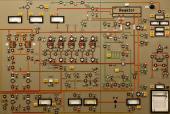
-
Vadders Spur / Trace of Vadders
After his father’s death, the son continues cooking his father’s favorite meals. The inherited calculating machine has become more than a machine - a substitute for the departed father. While the son is convinced the machine is trying to communicate something to him, the machine itself is observing the son’s culinary activities through a kitchen board, now an interface. The film explores robot-like categories and the possibility of attributing aura to a machine.
Director/author: Mandy Meißner
Germany 2010
Film & Video Video 4min.
Media Campus: Prepilog
-
Valleys of Fear / Valleys of Fear
The logician Charles S. Peirce, the author Edgar Allen Poe and the doctor-turnedwriter Arthur Conan Doyle all make an appearance in this poetic documentary about Cameron Todd Willingham's wrongful execution in Texas. Shot on 16mm, Super 8 and HD in Poland, Britain and the U.S..
Director/author: Erin Espelie
USA 2010
Film & Video Video 24min.
Tincture Time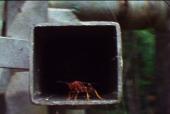
-
Varfix / Varfix
A video for music ›Varfix‹, composed by Kensuke Fujii. This music sounds somewhat monophonic, so this video was made as polyphony in contrast. Animation can make events not only simple but easy to understand. All elements used in this video are separated from their original meaning; they are used only to represent something dynamic.
Director/author: Kotaro Tanaka
Japan 2010
Film & Video Video 8min.
Into the Dark
-
Ville Marie / Ville Marie
The point-of-view of an individual falling from high rise buildings. An optically printed dream of falling, both gorgeous and ominous. The film centers around footage taken from a super 8 camera that has been dropped from a 60 story building, specially rigged to maintain a backwards looking perspective. The concept was born from a dream that Larose had in which he was falling from a high-rise facing up throughout the descent
Director/author: Alexandre Larose
Canada 2010
Film & Video 35 mm 12min.
Daysleepers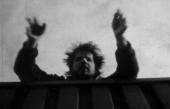
-
Vladimir Kempsky's Film / Vladimir Kempsky's Film
This work quotes some anonymous footage from a Russian family's home movie filmed in the late 70's. In this film, we realize a strange distance existing between the man and his daughter. The home movie was led to the original appearance by this ›distance‹. And when he held his camera, his eyes change from ›father‹ to ›observer.‹ This appearance is nothing but a cinema of Lumière.
Director/author: Ichiro Sueoka
Japan 2010
Film & Video 16 mm 8min.
Nippon Conception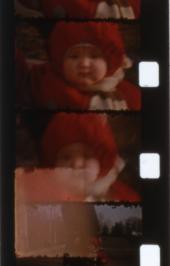
-
Volcano / Volcano
Music video about the explosion of love and passion.
Director/author: Shusaku Kaji
Japan 2010
Film & Video Video 4min.
Pop til u drop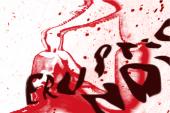
-
Vrolok / Vrolok
A city where Dracula lived as seen from the perspective of a bat as if sonar was made of light.
Director/author: Peter Miller
Germany 2010
Film & Video 16 mm 3min.
Into the Dark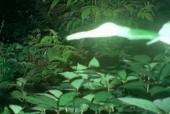
-
Wasteland Utopias / Wasteland Utopias
A cine-essay featuring visionary developer Del Webb (Sun City) and legendary radical psychiatrist/naturalist Wilhelm Reich (Orgone Energy). What on earth could these two possibly have in common? The sunny Sonoran Desert for one thing, a shadowy CIA Operative for another. Desert landscapes, desert soulscapes, sex, sustainability, Emotional Plague, cloudbusting, cosmic intervention - these and other relevancies link the 1950s with our present moment in surprising, and seemingly prophetic, ways. Sherman’s film deals with the social and environmental consequences of the urbanization of Arizona’s Sonora Desert. Based on doc interviews, found footage, and narrative tableaux, he explores the magic-conceptualist intersection of two radically different utopian thinkers: two forgotten figures from the Cold War era: real-estate mogul Del Webb who built his Sun City development in Southern Arizona, a colossal panoptic planned-retirement community in the late ‘50s, that never initiated the unsustainable urbanization of the Sonoran desert;and Wilhelm Reich, the ex-Freudian heretic who preached sexual freedom and imagined he could reclaim the Sonoran for mankind by bombarding the sky with invisible life-force quanta he called ›orgone radiation‹. Also Dr. Eva Reich remarks on her father’s UFO obsession, embedded in vintage Sun City propaganda.
Director/author: David Sherman
USA 2010
Film & Video Video 91min.
Wasteland Utopias
-
Whiteout / Whiteout
A structuralist metafilm about making a film. The movie unfolds itself to the viewer by showing glimpses of it's own filmmaking process. It creates conflict by guiding viewers attention to the material qualities of film medium, while also using narrative form for the representation of the filmmaking process.
Director/author: Mauri Lehtonen
Finland 2010
Film & Video Video 4min.
Daysleepers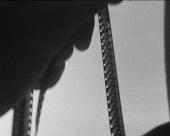
-
Woman Warrior Exposed (Sigourney Weaver Remix) / Woman Warrior Exposed (Sigourney Weaver Remix)
Sigourney Weaver is represented as a female power icon in pop culture, though several roles from her filmography epitomise Mulvey's notion of the Male Gaze, whereby Weaver is objectified and sexualised in the character personas she portrays. The iconic horror narrator John Newland draws public attention to the discord between Weaver's selective recollection and her actual cinematic record. This work constitutes a Fair-Use of any copyrighted material as provided for in section 107 of the US copyright law.
Director/author: Desiree D'Alessandro
USA 2010
Film & Video Video 1min.
Media Campus: 100 Jahre Hollywood und seine Folge
-
Yoru ni Ukabu (Floating Into The Night) / Floating Into The Night
Everything floats into the night as a sign of everything.
Director/author: Youki Hirakawa
Japan 2010
Film & Video Video 2min.
Nippon Conception
-
You Are Here / You Are Here
Daniel Cockburn’s feature might be identified as a meta-detective story. A man trapped in a room answers questions in Chinese without comprehending the language. Confused pedestrians wander the city streets, taking meaningless orders from a control centre that guides their movements. A child tells the story of a mad scientist whose ubiquitous computer-eye threatens to take over the world. These are just a few of the confounding twists in you are here, the first feature directed by Toronto-based video artist Daniel Cockburn. With that broadly conceived mindgame, he launches a seriously heavy look at the elusive nature of identity. Shifting to a new setting every few minutes, he makes it difficult to contemplate any given strand for too long, extending the laser pointer challenge to an endlessly boggling structure. Unless, as another character explicitly informs us in the opening scene, that’s precisely not what we’re supposed to do. You Are Here is a Borgesian fantasy composed of multiple worlds, circling and weaving around each other in always- unexpected ways.At the centre of this narrative labyrinth is a reclusive woman (Tracy Wright) who searches for meaning in the mysterious documents that keep appearing to her. Her investigation begins when she finds a tape recording of a man giving a bizarre lecture: calming and sinister at the same time, he instructs how to ›get where you need to go‹. Is this a random find, or a message to her? Another strange document presents itself, and another… Swiftly her home becomes an archive brimming with enigmatic texts, images and sounds. She forms deep connections with the people contained in these documents - the Lecturer, a Prisoner, an Inventor - each of them, like her, struggling with the unknowable laws of their own worlds. But the organized becomes the organizer when her meticulous system turns on her; the archive is a trickster threatening to pull her mind apart. As realities collapse and intersect around her, she must make a final choice: is she a free agent, or just a tool of the archive?‹ Innovative in form and unique in its content,YOU ARE HERE is an intellectually adventurous movie that explores the nature of consciousness, the relationship between technology and our sense of self, and what happens to a mind when it spends too long inside an experiment of its own devising. ›Inventive and multi -layered , You Are Here is a brilliantly organized first feature full of philosophical ideas and tremendous energy.‹ – Atom Egoyan
Director/author: Daniel Cockburn
Canada 2010
Film & Video Video 78min.
You are here
-
You're still in my mind / You're still in my mind
A music clip directed by Alex Guimerà.
Director/author: Alex Guimerá
Spain 2010
Film & Video Video 4min.
Pop til u drop
-
Yura-rail / Yura-rail
I took a picture on a monorail. The image was processed into a circle.
Director/author: Kazuhiko Kobayashi
Japan 2010
Film & Video Video 2min.
Nippon Conception
-
Zorn /
She is already waiting slightly impatiently as her brother joins her for dinner. He immediately starts complaining about everyday annoyances. It starts cautiously, but gets more and more out of hand. It doesn’t matter whether it's about the television programme, erratic behaviour in road traffic or noise disturbance. No "problem" seems to be unimportant enough to ignore it.
Director/author: Marc Rühl
Germany 2009
Film & Video Video 6min.
Media Campus: Over the Edge